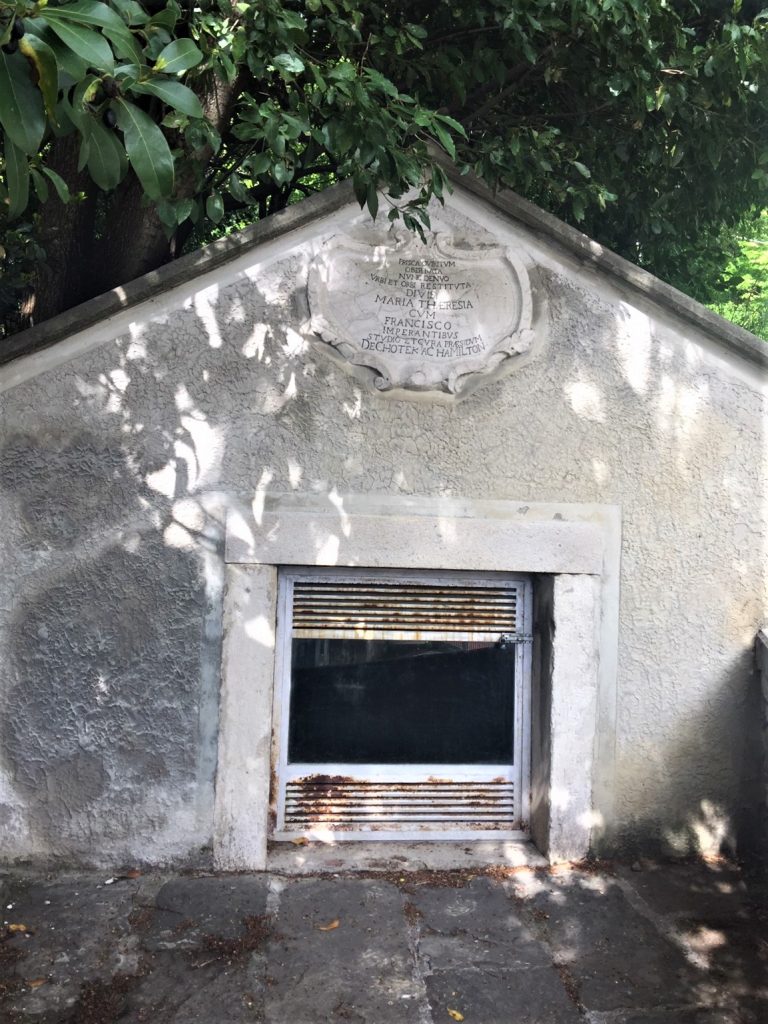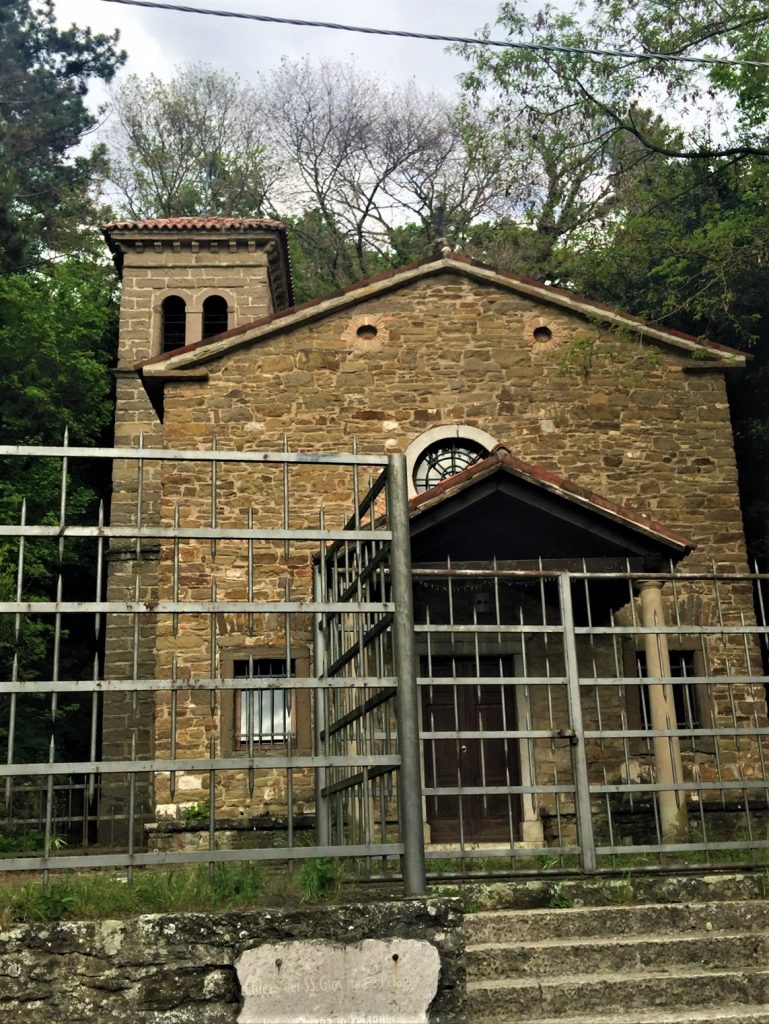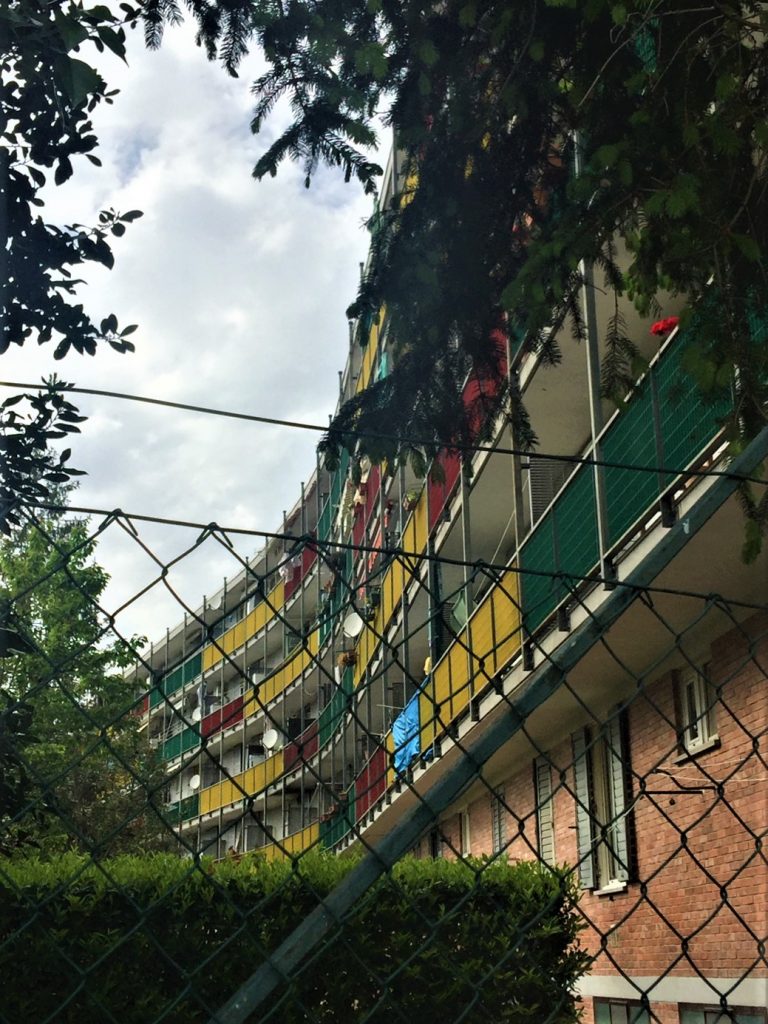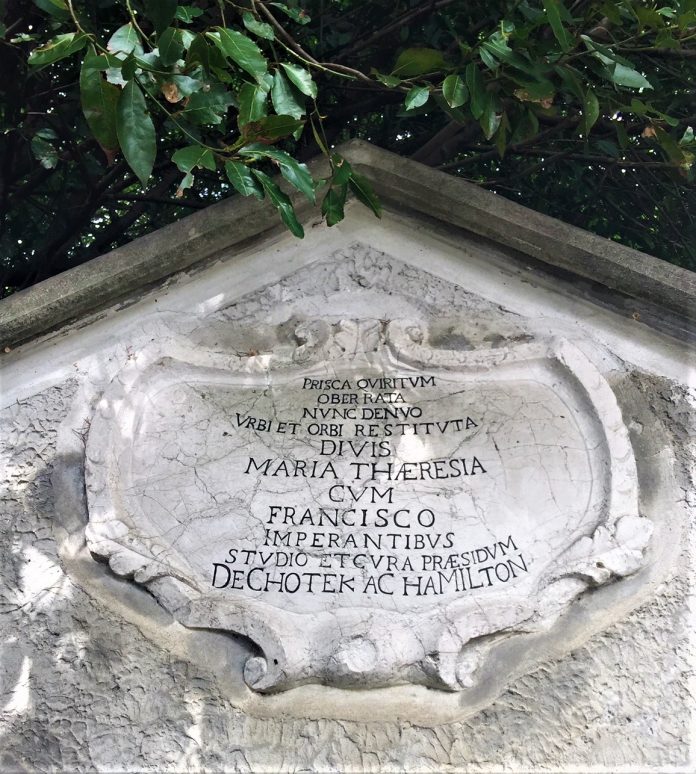by Alessandra Ressa
Historians believe it was originally built in Trieste by ancient Romans as one of the three artificial underground water canals that crisscrossed Trieste and its hills in what was undoubtedly one of the most innovative creations of engineering at the time, the aqueduct.
This network of pipes and canals was so brilliantly constructed that it was used with little changes in the centuries to come until the outbreak of World War I and provided water and sanitation for ancient Trieste.
Located along Via Capofonte next to Via San Cilino, on the main hill of San Giovanni, this precious reminder of ancient Trieste, whose existence and location is barely known to locals and tourists alike, has been inserted in the list of Italy’s Ancient Aqueducts (there are only 120 left in the country).
Look closely through the dirty protection glass under the fountainhead and you will be able to discern the old tanks that were once filled with the abundant waters of the streams coming from Carso. The water basins allowed for gravel and dirt to collect at the bottom. Look further and you will also catch a glimpse of the artificial underground canals which carried the streams all the way from Carso to the city.

The ancient Romans used this section of the aqueduct in Via Capofonte until the VI Century, when the fury of the barbaric invasions determined its temporary abandonment. Back to being a rural village after the defeated Romans left the area, the water sources for Trieste’s few inhabitants became a handful of artificial wells.
Almost one thousand years later, with the beginning of the 18th Century, an unprecedented economic boom began for Austro-Hungarian Trieste, and, with it, major population growth. Providing water for its subjects became a priority for the Empire. But it was only when energetic Empress Maria Theresa came to power that Trieste saw its most impressive changes in water supply and distribution, to the extent that today’s modern aqueduct and sewage systems still relies on ancient Theresian infrastructures.

Maria Theresa revitalized and improved the ancient Roman aqueduct of Via Capofonte, the closest one to the city center, and made it into an efficient source of drinking water which fed Trieste’s main fountains, all the way to Ponterosso and Piazza Unità. Very few privileged buildings had direct running water access (a fountain usually located in the private yard at the ground floor).
Palazzo Carciotti, Sartorio, some government buildings and main inns were among the few fortunate. Further extension of the aqueduct ensured that all fountains of Trieste (many more than there are in the present day) could provide water for suburban inhabitants. Droughts, however, remained a seasonal problem for which not even ingenious Maria Theresa could find a solution.

Not far from the site, going uphill, the church of San Giovanni e Pelagio is a tiny jewel of Romaneque architecture. Further up on your left, quite unexpectedly located next to ugly public housing, a thick wooded area opens up for a nice hike. This is one of those rare Trieste areas which have miraculously survived urbanization and is now a public city park.
Known as Bosco del Capofonte, as soon as you step into its cool, dark trails, you will forget you are in an overpopulated neighborhood. In spring and summer it isn’t rare to spot families of wild boards. Contrary to what people say, wild boars will very rarely attack man, and only if seriously threatened. They normally get scared, parents and piglets alike, and run for their lives.

The Via Capofonte Theresian aqueduct was permanently dismissed during WWI, when one of the streams that converged into the site was found too polluted for drinking.






























Bel lavor, brava!
A presto e Buon Anno
Sežana Jones
Io sono nata a Trieste 1944, la mia famiglia a ha emigrato a l’Australia 1956/1957
Mi sempre piace leggere notizie di Trieste.